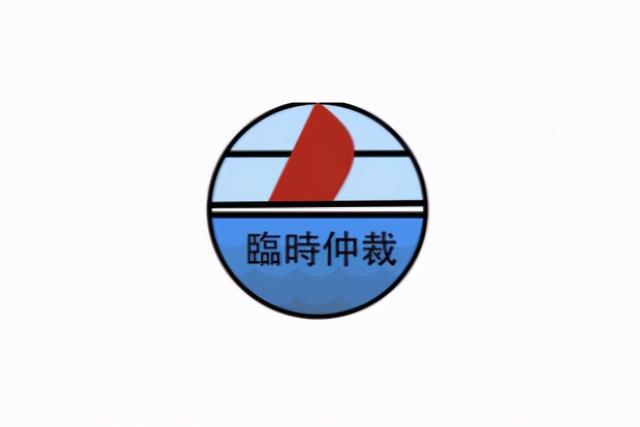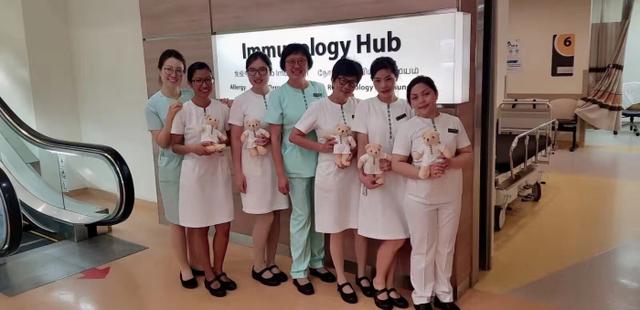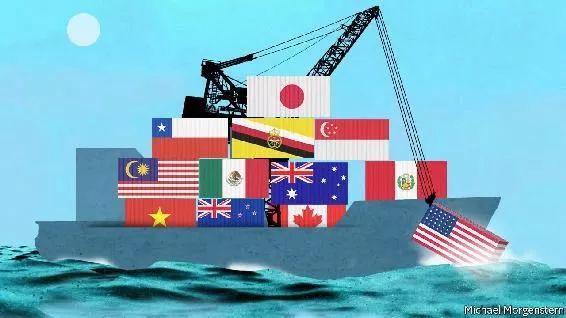2018.9.10经济学人官译:该抄就抄
教育政策
该抄就抄
其他国家应该向新加坡的学校学什么
Education policy
Copying allowed
What other countries should learn from Singapore’s schools
岛国新加坡在1965年独立时,它几乎没有朋友,更没有自然资源。它是如何成为世界上最大的贸易和金融中心之一的?新加坡首任总理李光耀解释说,新加坡的战略是“开发新加坡唯一的自然资源:人才”。WHEN the island of Singapore became an independent country in 1965, it had few friends and even fewer natural resources. How did it become one of the world’s great trading and financial centres? The strategy, explained Lee Kuan Yew, its first prime minister, was “to develop Singapore’s only available natural resource: its people”.
今天,新加坡的教育系统被认为在全球首屈一指。经合组织(OECD)的国际学生评估项目(PISA)每三年对几十个国家的15岁学生开展数学、阅读和科学三大科目的测试,新加坡一直名列前茅。新加坡学生的数学成绩比美国学生领先大概三年。在对更年幼学生的测试中,该国表现同样出色。这里最好的学校的毕业生遍布于全球顶尖大学中。Today Singapore’s education system is considered the best in the world. The country consistently ranks at the top of the OECD’s Programme for International Student Assessment (PISA), a triennial test of 15-year-olds in dozens of countries, in the main three categories of maths, reading and science. Singaporean pupils are roughly three years ahead of their American peers in maths. Singapore does similarly well in exams of younger children, and the graduates of its best schools can be found scattered around the world’s finest universities.
这个岛国有很多地方可供全世界借鉴。但其他国家并不情愿向它学习。原因之一是新加坡偏爱传统教学法,由老师主导课堂。与之形成鲜明对比的是,许多改革者倾向于更宽松、更“进步”的教学方式,鼓励孩子们自学。尽管国际研究表明,直接教学法确实是一种传授知识的好方法,但批评人士认为,新加坡的模式是“死读书”,培养出的是缺乏创造力、一味苦学的数学能手。父母们担心这个系统给他们的孩子带来压力(还有对自己的压力,虽然他们一边这样担忧一边还在送孩子上课外班)。The island-state has much to teach the world. But other countries are reluctant pupils. One reason is that Singapore favours traditional pedagogy, with teachers leading the class. That contrasts with many reformers’ preference for looser, more “progressive” teaching intended to encourage children to learn for themselves. Although international studies suggest that direct instruction is indeed a good way of conveying knowledge, critics contend that Singapore has a “drill and kill” model that produces uncreative, miserable maths whizzes. Parents worry about the stress the system puts on their children (and on them, even as they ferry kids to extra classes).
然而,新加坡的情况表明,优异的学业成绩不需要以牺牲个人能力为代价。2015年,新加坡学生在PISA的一项新排名中也拿下了第一,该排名考察的是协作解决问题的能力。他们在这一项上的得分甚至比阅读和科学的分数还要高。他们还表示自己很快乐,比芬兰孩子更快乐,而芬兰被教育学家奉为用更具亲和力的教学方法获得优异成绩的范例。新加坡并不满足于它的成就。现在,它正在通过改革提升创造力、减轻压力。这不是失败的表现,而是一种循序渐进、以证据为导向的教育改革。这是新加坡带给世界其他地区的三堂课中的第一课。Yet Singapore shows that academic brilliance need not come at the expense of personal skills. In 2015 Singaporean students also came first in a new PISA ranking designed to look at collaborative problem-solving, scoring even better than they did in reading and science. They also reported themselves to be happy—more so than children in Finland, for instance, a country that educationalists regard as an example of how to achieve exceptional results with cuddlier methods of teaching. Not content with its achievements, Singapore is now introducing reforms to improve creativity and reduce stress (see Asia section). This is not a sign of failure, but rather of a gradual, evidence-led approach to education reform—the first of three lessons that Singapore offers the rest of the world.
其他国家的教育改革常常零散而缺乏协调,新加坡却努力从整体上审视这个体系。它重金投资教育研究。所有的改革都经过试点,在进一步推行它们之前一丝不苟地监测成效。它密切关注应当如何在学校中应用新思想和新成果。它精心编制教科书、练习题和例题——这在西方常被视为过时——以求让课堂教学变得更加专业。其结果是评估、问责和教学风格协调运作。Where other countries often enact piecemeal and uncoordinated reforms, Singapore tries to look at the system as a whole. It invests heavily in education research. All reforms are tested, with the outcomes diligently monitored, before being rolled out. Close attention is paid to how new ideas and results should be applied in schools. Carefully developed textbooks, worksheets and worked examples—practices often seen as outdated in the West—are used to inject expertise into the classroom. The result is good alignment between assessments, accountability and teaching styles.
第二课是拥抱新加坡独特的教学方法,尤其是数学。美国和英国在一定程度上已经这么做了。这种方法强调范围更窄但更深入的课程内容,并且力保整个班级按照教学大纲取得进步。学校有强制补课帮助有困难的学生跟上进度;即使是学习能力较差的学生也表现得相对较好。2016年英国的一项分析发现,采用新加坡的方法帮助提高了成绩,虽然在转变方式的过程中功效打了些折扣。The second lesson is to embrace Singapore’s distinctive approach to teaching, notably of mathematics—as America and England are already doing to some extent. It emphasises a narrower but deeper curriculum, and seeks to ensure that a whole class progresses through the syllabus. Struggling pupils get compulsory extra sessions to help them keep up; even the less-able do comparatively well. An analysis in 2016 in England found that the Singaporean approach boosted results, though it was somewhat watered down in transition.
第三课是最重要的一课:专注于培养优秀的教师。在新加坡,教师每年接受100小时的培训以跟上最新的教学方法。政府提供的薪酬也很优厚。新加坡满足了扩大班级规模的需求(平均每个班36名学生,而经合组织成员国只有24名)。新加坡的观点是,由优秀的老师来上大课,要比由平庸的老师上小课好。那些希望获得更高威望、但又不想承担学校行政管理工作的教师,可以努力成为“主任教师”,兼有培训其他教师的职责。最好的老师会被派驻到教育部短期任职,并得到丰厚的奖金。总的来说,教师的薪水和私营部门同等资历的人差不多。教师还必须接受严格的年度绩效评估。The third and most important lesson is to focus on developing excellent teachers. In Singapore, they get 100 hours of training a year to keep up to date with the latest techniques. The government pays them well, too. It accepts the need for larger classes (the average is 36 pupils, compared with 24 across the OECD). Better, so the thinking goes, to have big classes taught by excellent teachers than smaller ones taught by mediocre ones. Teachers who want more kudos but not the bureaucratic burden of running schools can become “master teachers”, with responsibility for training their peers. The best teachers get postings to the ministry of education and hefty bonuses: overall, teachers are paid about the same as their peers in private-sector professions. Teachers are also subject to rigorous annual performance assessments.
下课
Class dismissed
这一体系并非无懈可击。其他国家可能希望避免像新加坡那样,从12岁起将成绩好和成绩差的学生分校。这样做的好处尚未证实,而且会增加考试的压力。此外,新加坡国土面积小,能达到不同寻常的集中。教育部提学司表示,他能叫出80%以上校长的名字,这让大家更容易跟进当下的情况。其他方面的权衡取舍在其他地区难以实施。比如,在大多数国家,教师工会和家长都抵制大班授课。这很遗憾。如果有更多国家抄新加坡的作业,教育会好得多。The system is hardly faultless. Other countries might wish to avoid Singapore’s dividing of high- and low-achievers into separate schools from the age of 12. The benefits of doing so are unproven, and it contributes to stress about exams. Singapore’s size, moreover, allows for an unusual degree of centralisation. The director-general of the ministry of education says he knows more than 80% of head teachers by name, which makes it easier to keep tabs on what is going on. Other trade-offs would be unpalatable elsewhere. In most countries, teachers’ unions and parents are resistant to big classes, for instance. That is a shame. Education would be much better if more countries copied Singapore’s homework.






















评论